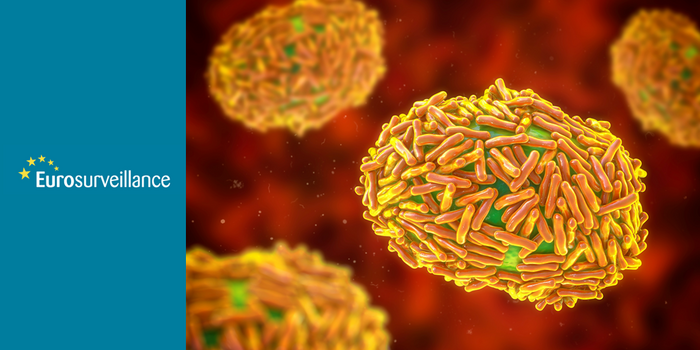During the currently evolving outbreak of monkeypox cases outside of known endemic areas, transmission is mainly driven by close physical contact with symptomatic people. While virus transmission between humans has been described previously, data on environmental contamination of surfaces are rare.

Credit: Eurosurveillance/Getty images
During the currently evolving outbreak of monkeypox cases outside of known endemic areas, transmission is mainly driven by close physical contact with symptomatic people. While virus transmission between humans has been described previously, data on environmental contamination of surfaces are rare.
Environmental sampling in patient rooms
Nörz et al. [1] swabbed surfaces in the immediate and adjacent rooms of two hospitalised monkeypox patients in Germany. The patients’ isolation rooms were separated from the ward corridor by anterooms, where hospital staff put their personal protective equipment on and off (donning and doffing).
Contamination with up to 105 viral copies/cm2 on inanimate surfaces was estimated by PCR and the virus was successfully isolated from surfaces with more than 106 copies.
According to the authors, all the surfaces that the two patients had touched directly showed viral contamination, with the highest loads detected in both bathrooms (e.g. lever, washbasin, toilet seats). Fabrics such as towels, shirts or pillowcases that the patients used frequently also showed viral contamination.
Viral contamination does not equal infectious virus
The authors highlight that there currently are no definite data on what dose of virus leads to infection with monkeypox in humans. However, assumptions are that it requires a significantly higher dose to trigger infection than e.g. variola virus.
Nörz et al. hence stress that “despite high contamination with up to 105 cp/cm2 as well as the successful recovery of monkeypox virus from samples with a total of >106 copies, our findings do not prove that infection can occur from contact with these surfaces”. Additionally, detecting viral DNA by PCR “cannot be equated with infectious virus”.
Prevention of virus spread from symptomatic patients should be individually adapted. Based on their findings, the authors conclude that “regular disinfection of frequent hand and skin contact points during the care processes additional to regular room cleaning and surface disinfection using products with at least virucidal activity against enveloped viruses can reduce infectious virus on surfaces and thereby risk of nosocomial transmission”.
—- Ends —-
References/notes to editors:
[1] Nörz Dominik, Pfefferle Susanne, Brehm Thomas, Franke Gefion, Grewe Ilka, Knobling Birte, Aepfelbacher Martin, Huber Samuel, Klupp Eva M., Jordan Sabine, Addo Marylyn M., Schulze zur Wiesch Julian, Schmiedel Stefan, Lütgehetmann Marc, Knobloch Johannes K.. Evidence of surface contamination in hospital rooms occupied by patients infected with monkeypox, Germany, June 2022. Euro Surveill. 2022;27(26):pii=2200477. Available from: https://doi.org/10.2807/1560-7917.ES.2022.27.26.2200477
[2] Monkeypox is a zoonotic disease, i.e. it can be transmitted between animals and humans via direct or indirect contacts. Following the eradication of smallpox and the end of universal smallpox vaccination, monkeypox is currently the most prevalent orthopoxvirus infection in humans. See: European Centre for Disease Prevention and Control. Monkeypox multi-country outbreak – 23 May 2022. ECDC: Stockholm; 2022. Available from: https://www.ecdc.europa.eu/en/publications-data/risk-assessment-monkeypox-multi-country-outbreak
[3] See further peer-reviewed articles on the current monkeypox outbreak: https://bit.ly/EUSMPX
Journal
Eurosurveillance
DOI
10.2807/1560-7917.ES.2022.27.26.2200477
Method of Research
Observational study
Subject of Research
People
Article Title
Article title: Evidence of surface contamination in hospital rooms occupied by patients infected with monkeypox, Germany, June 2022
Article Publication Date
30-Jun-2022
COI Statement
None declared




